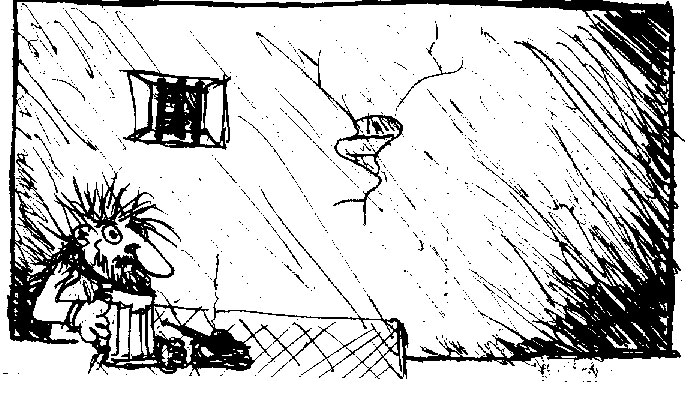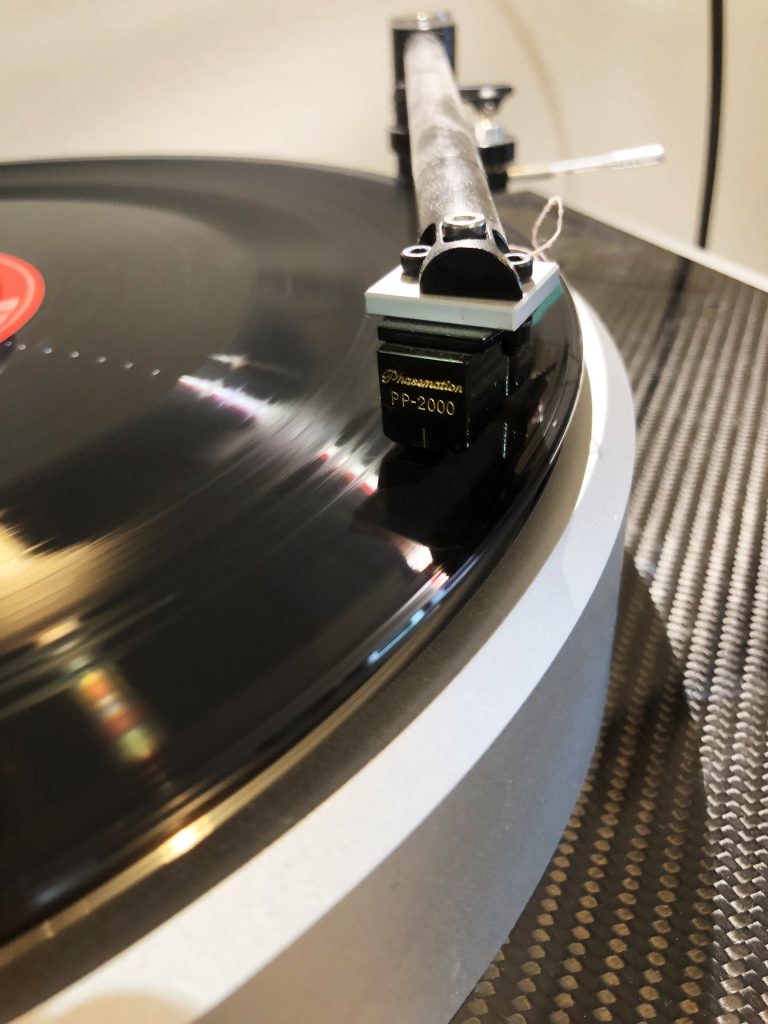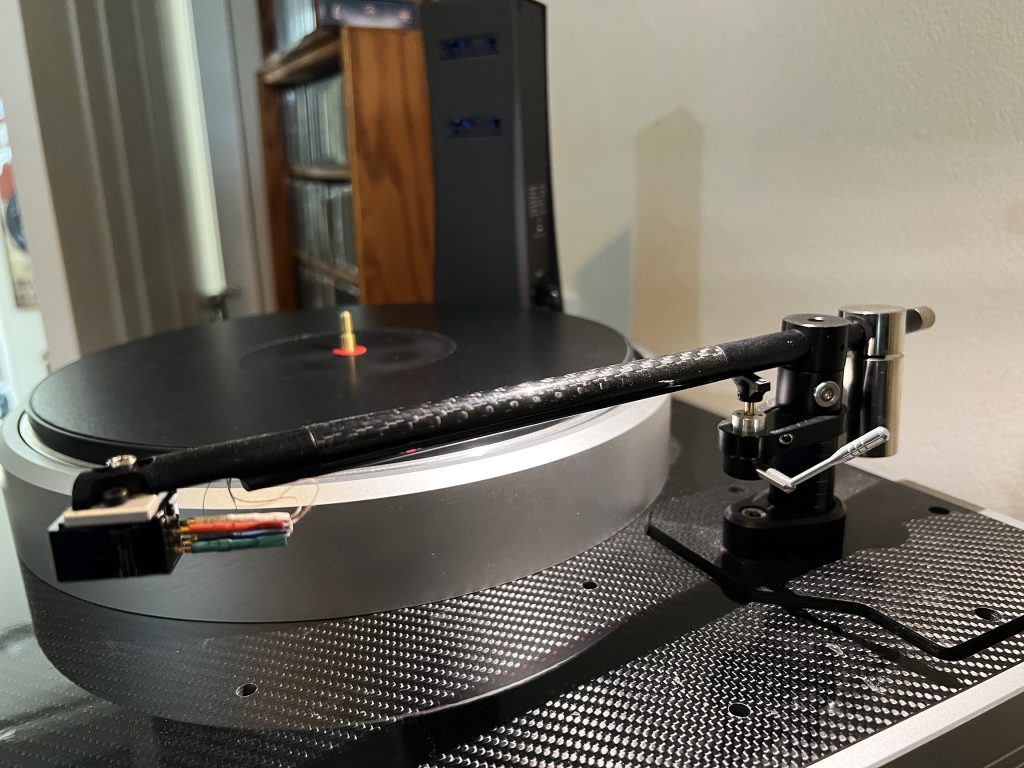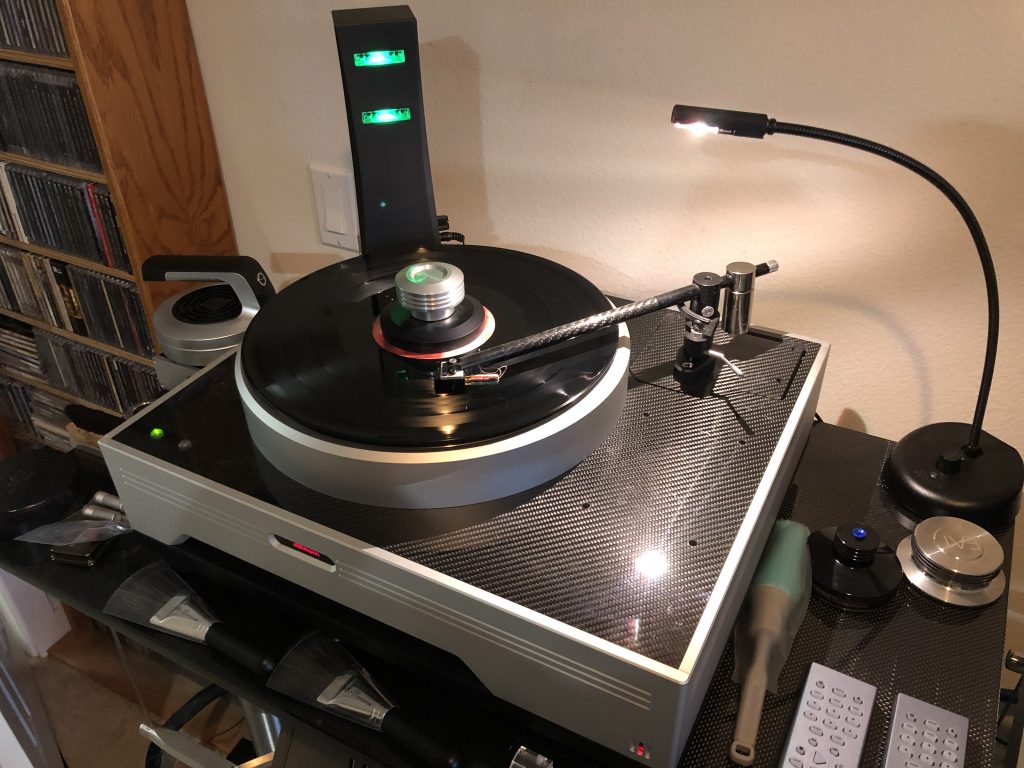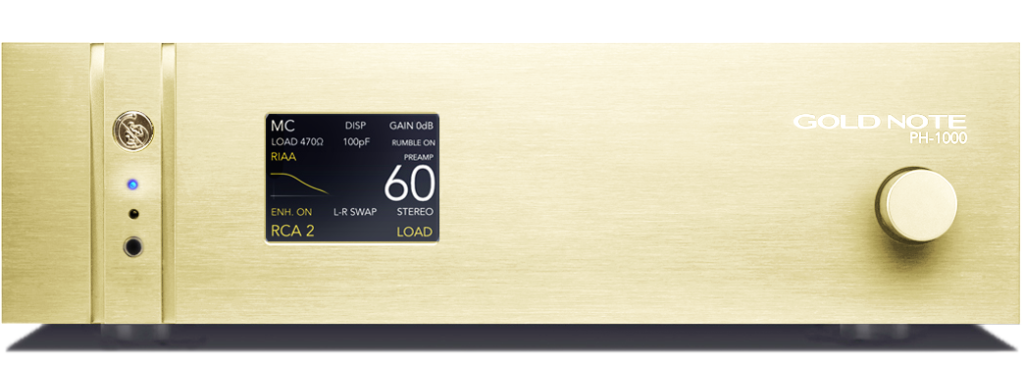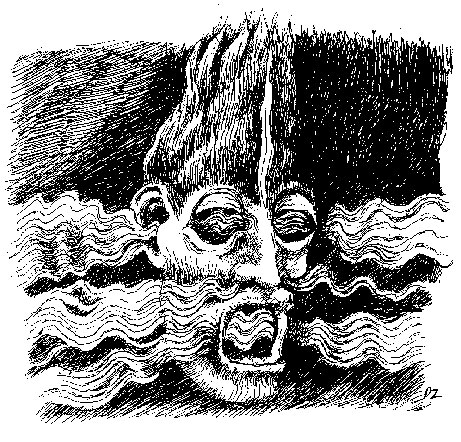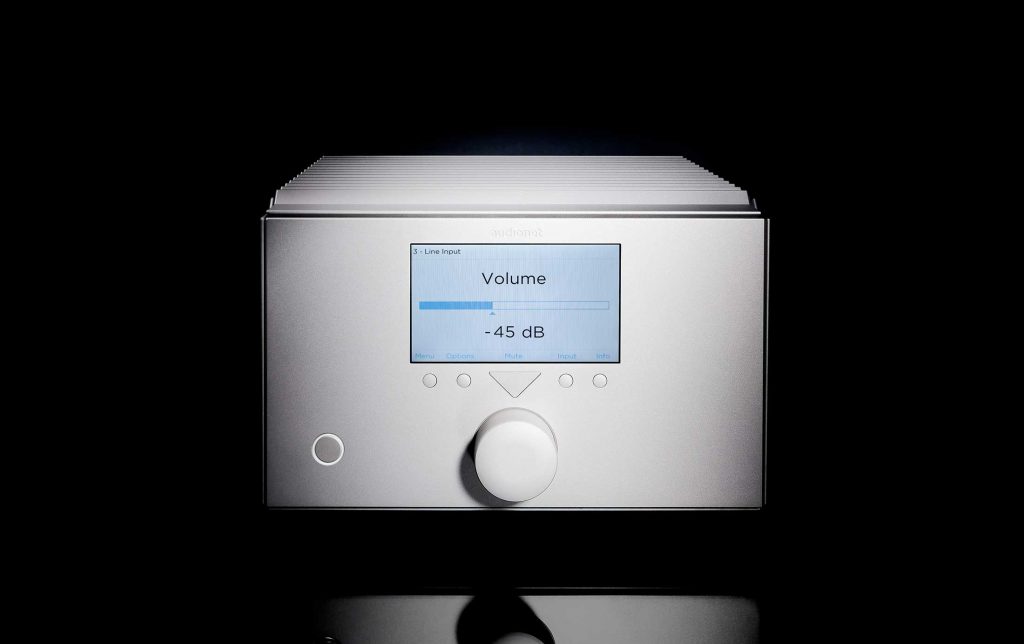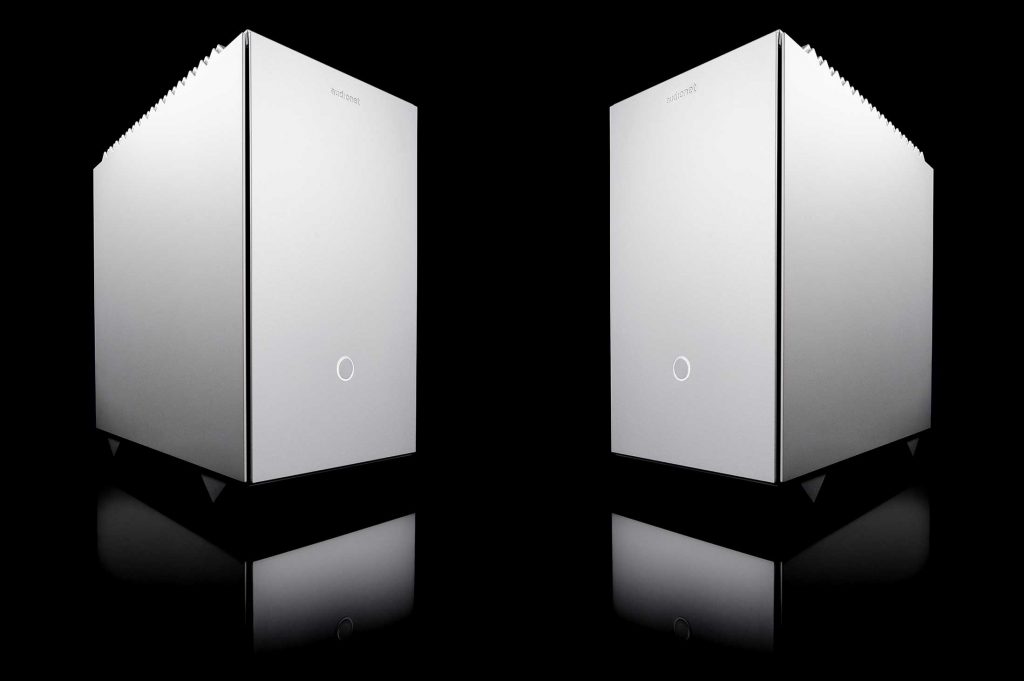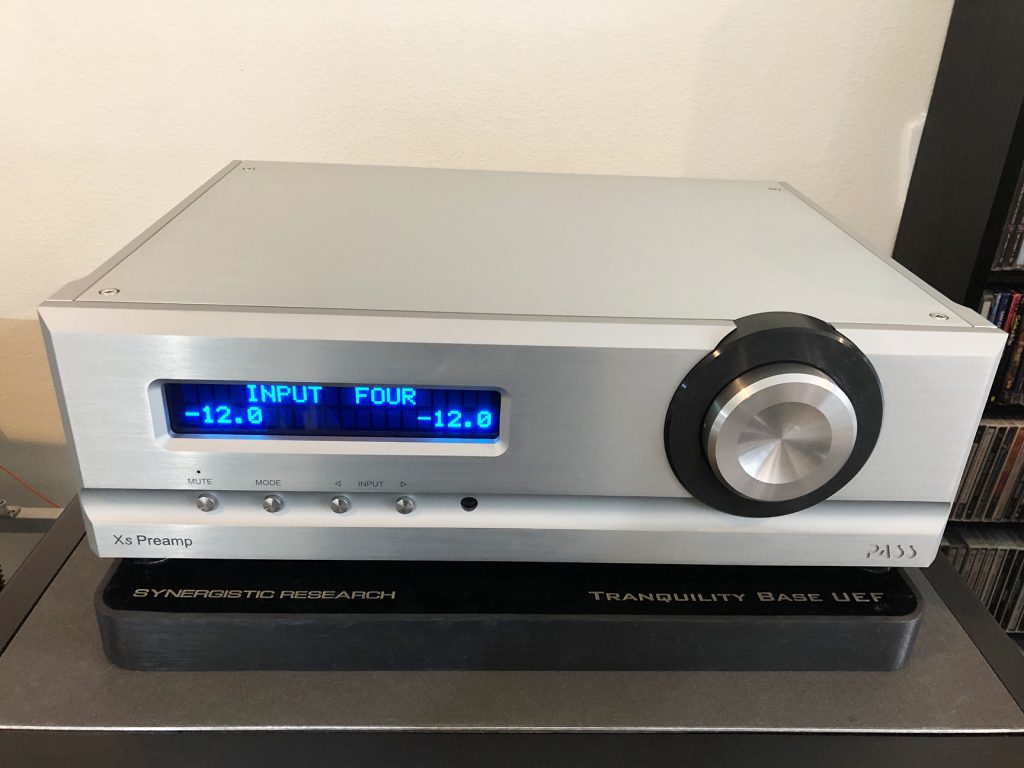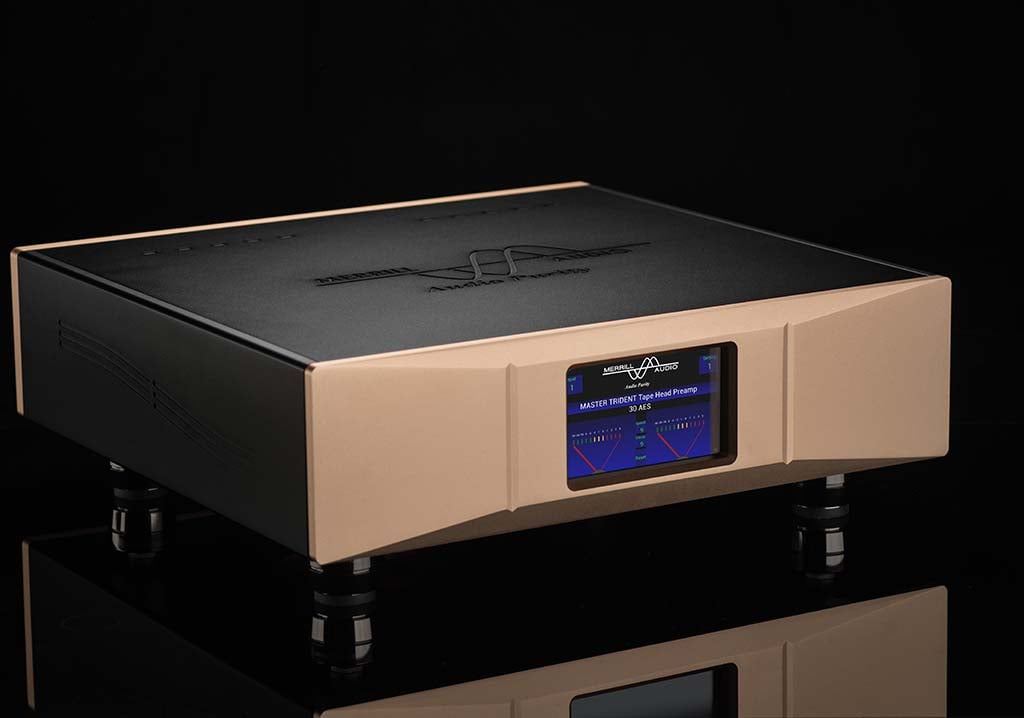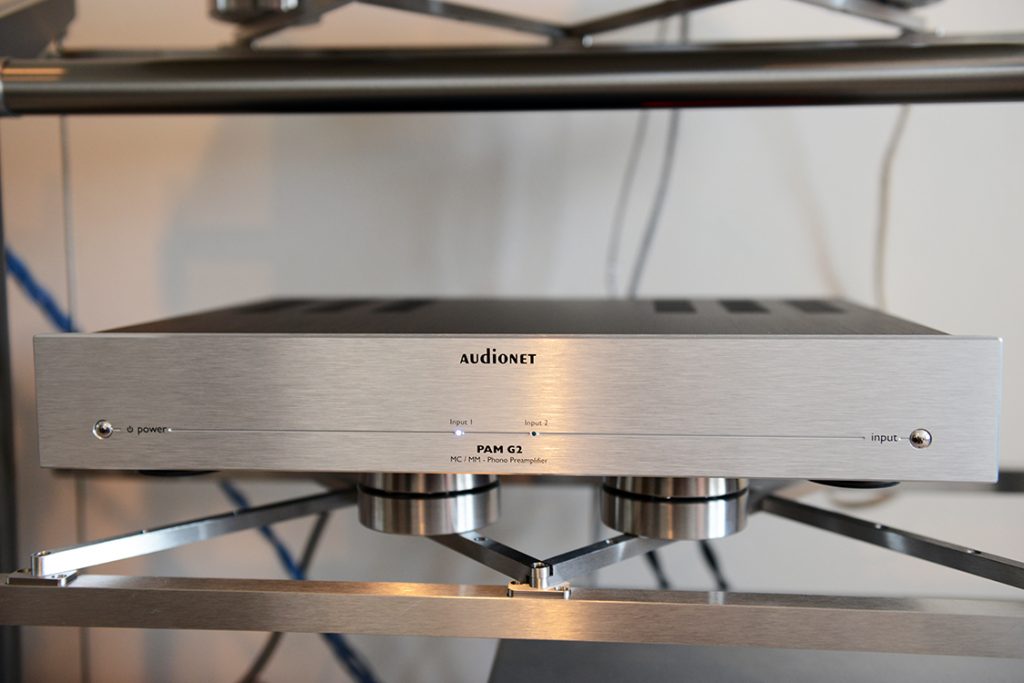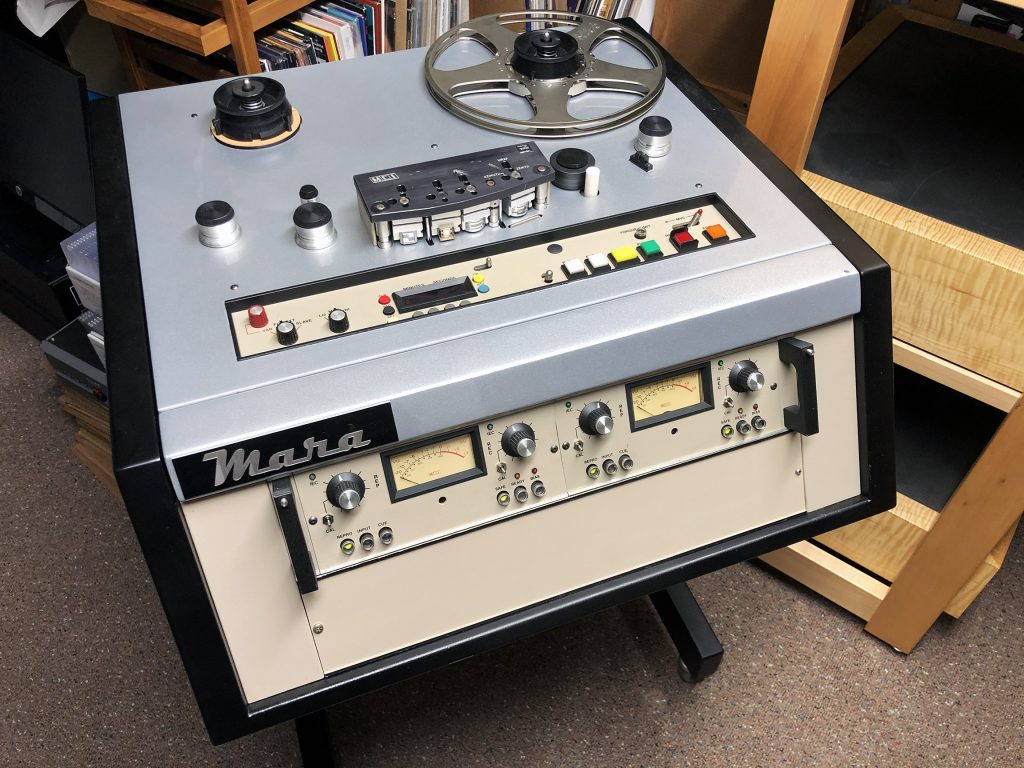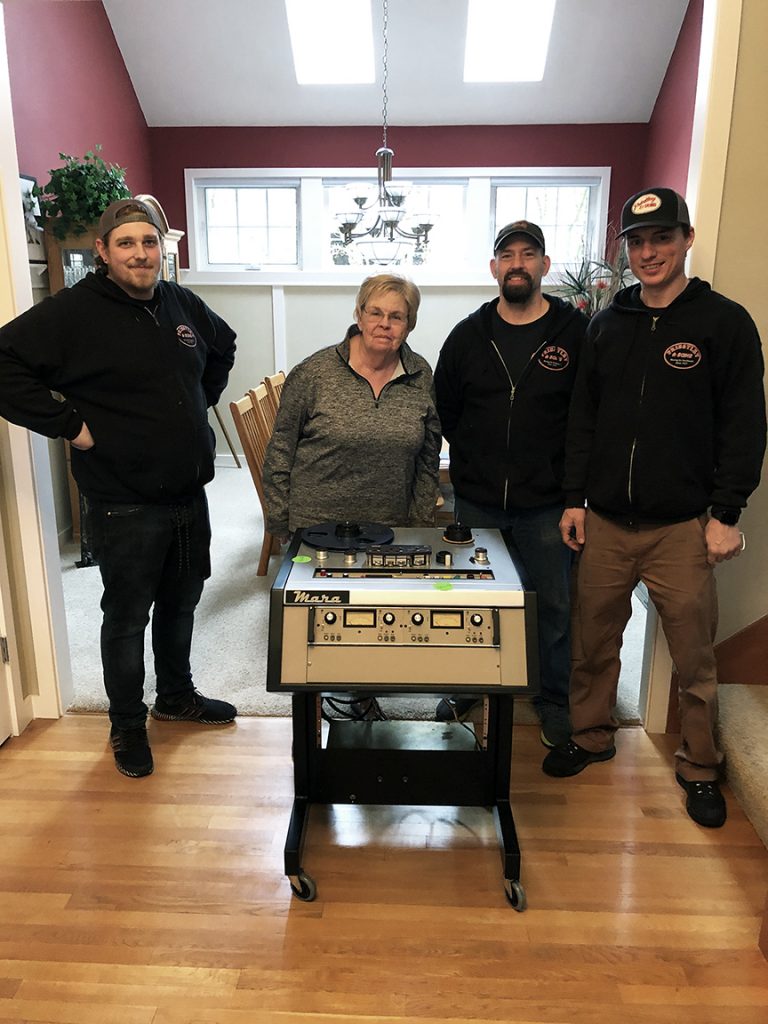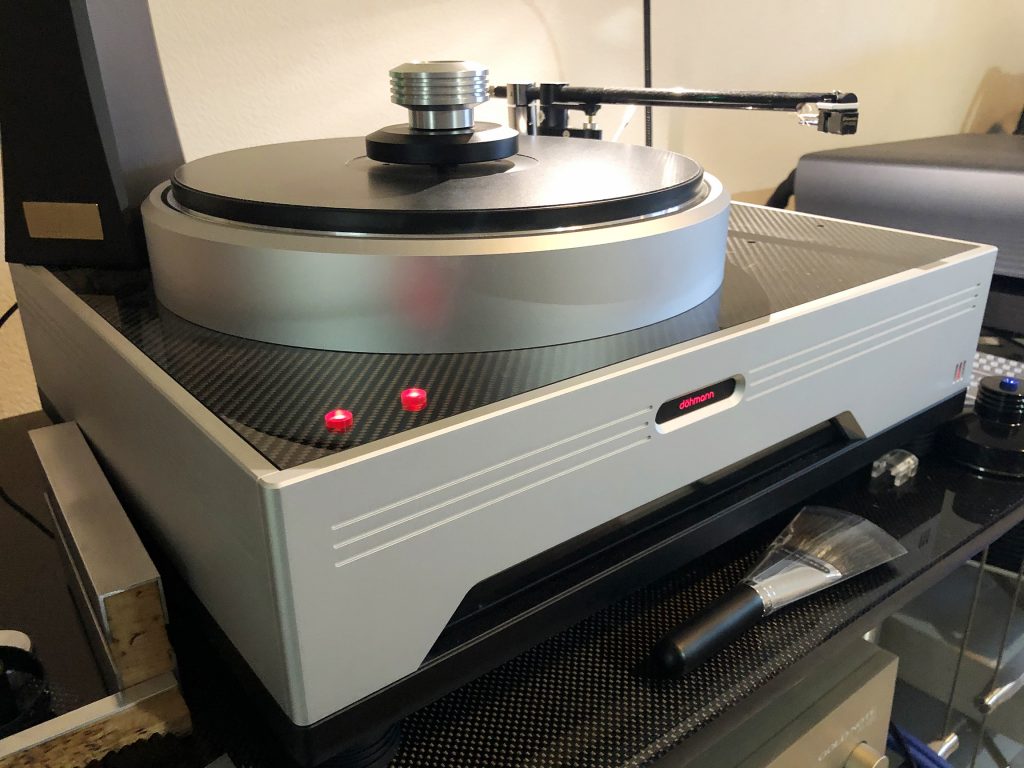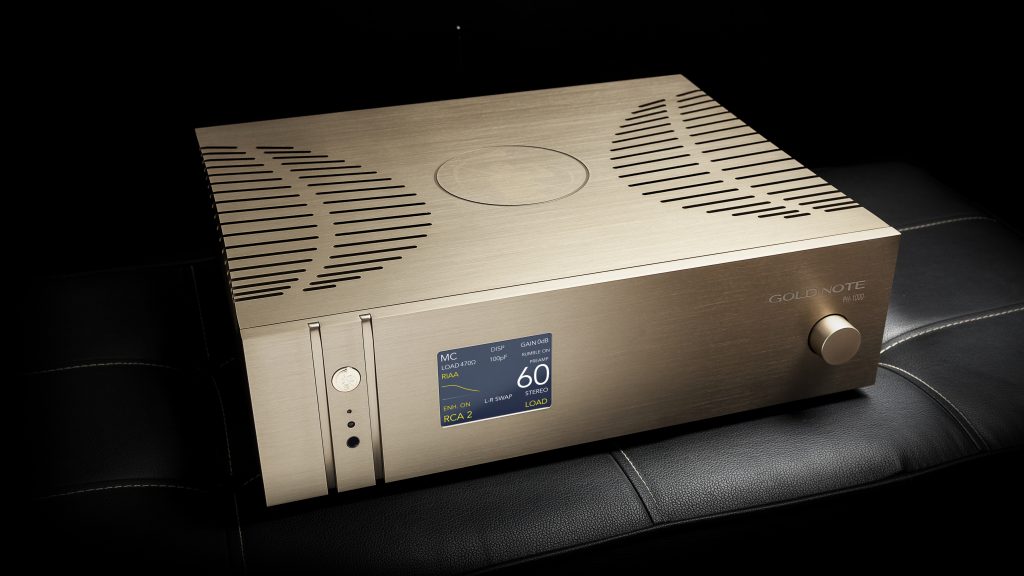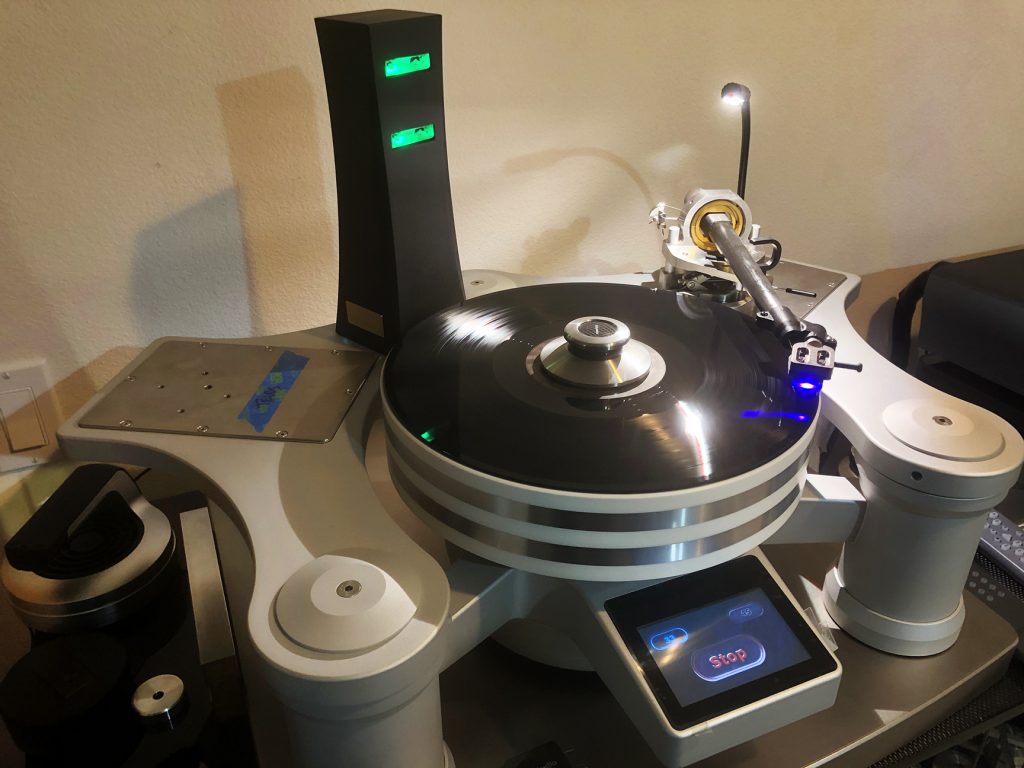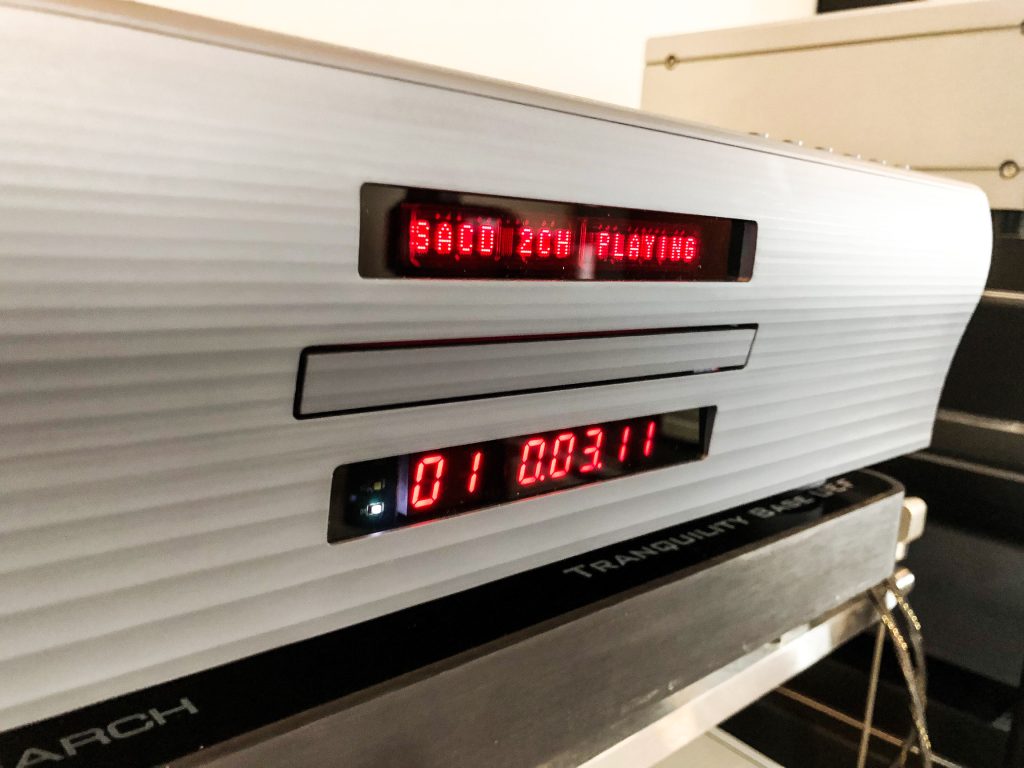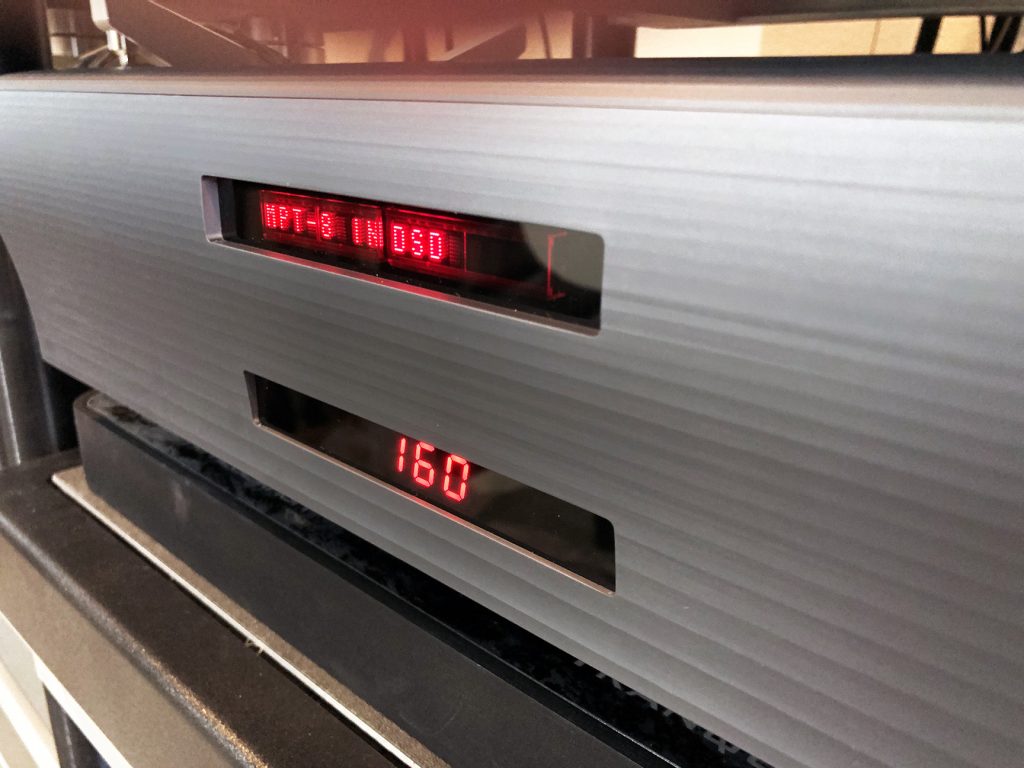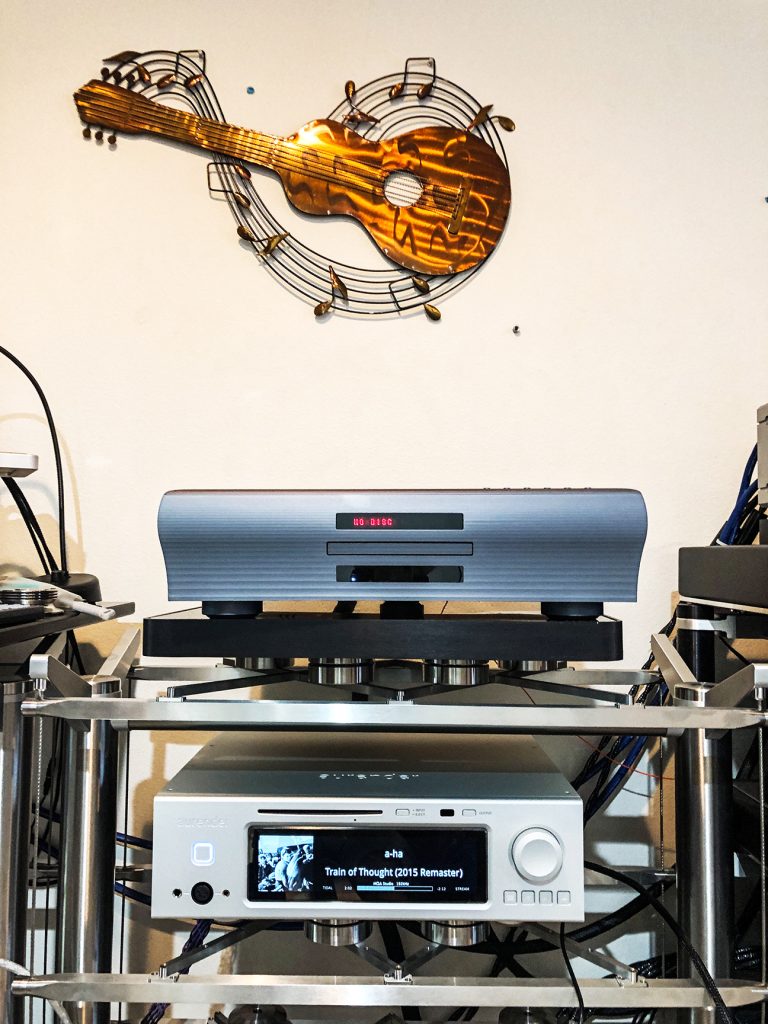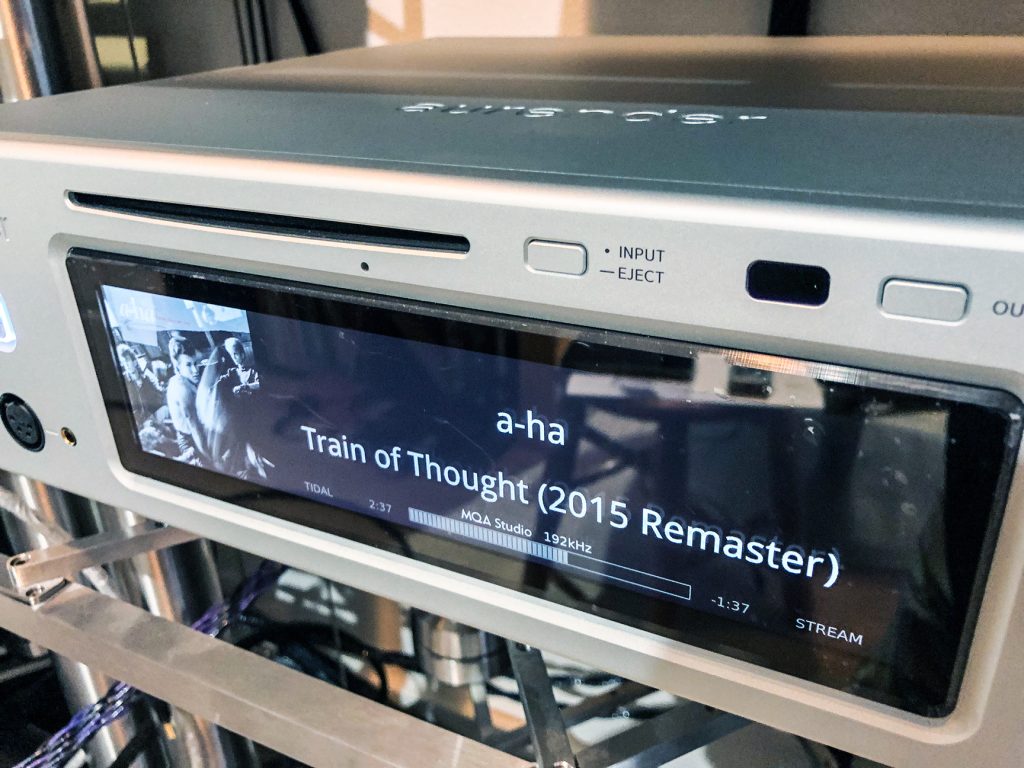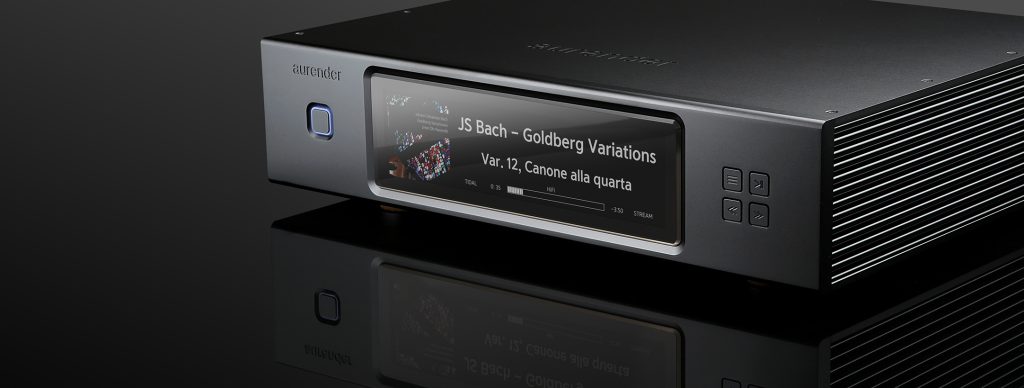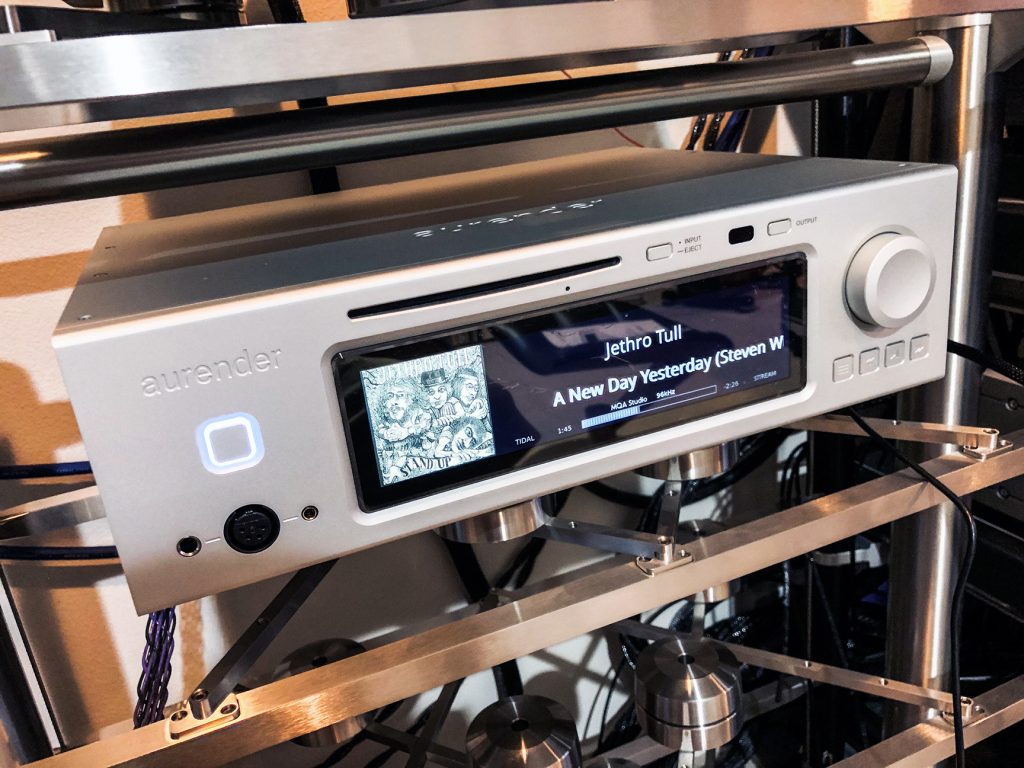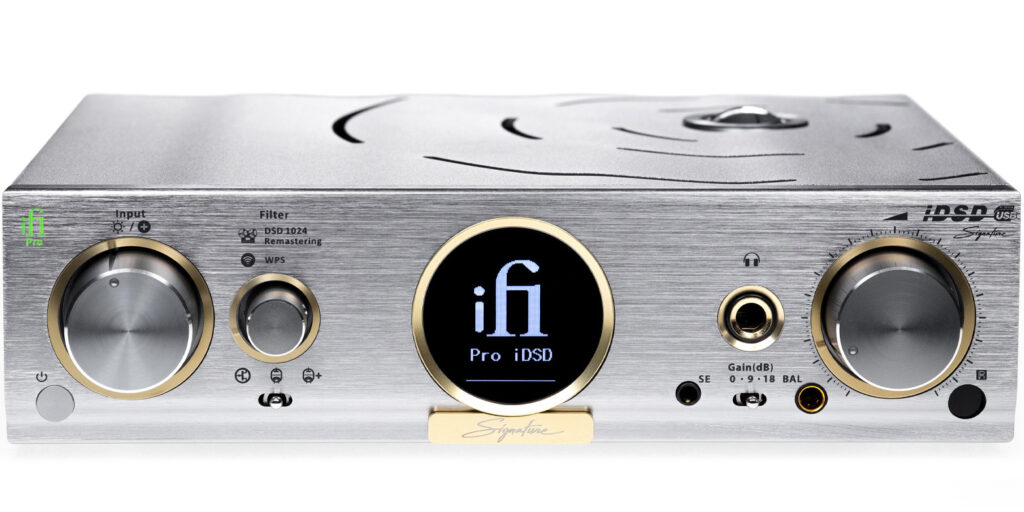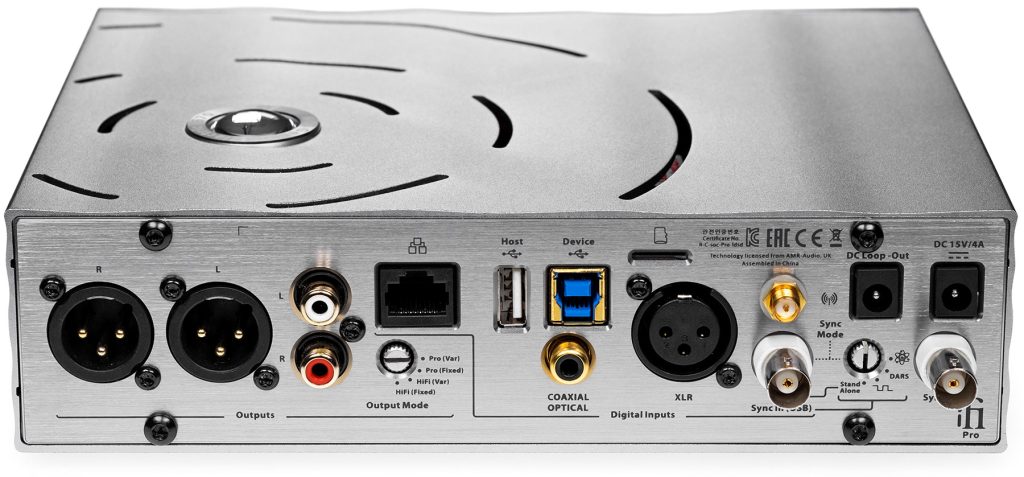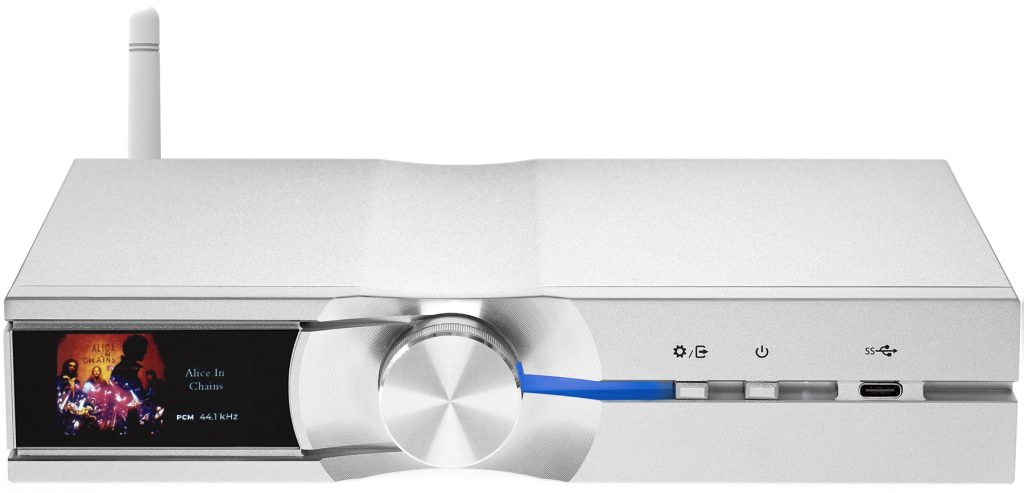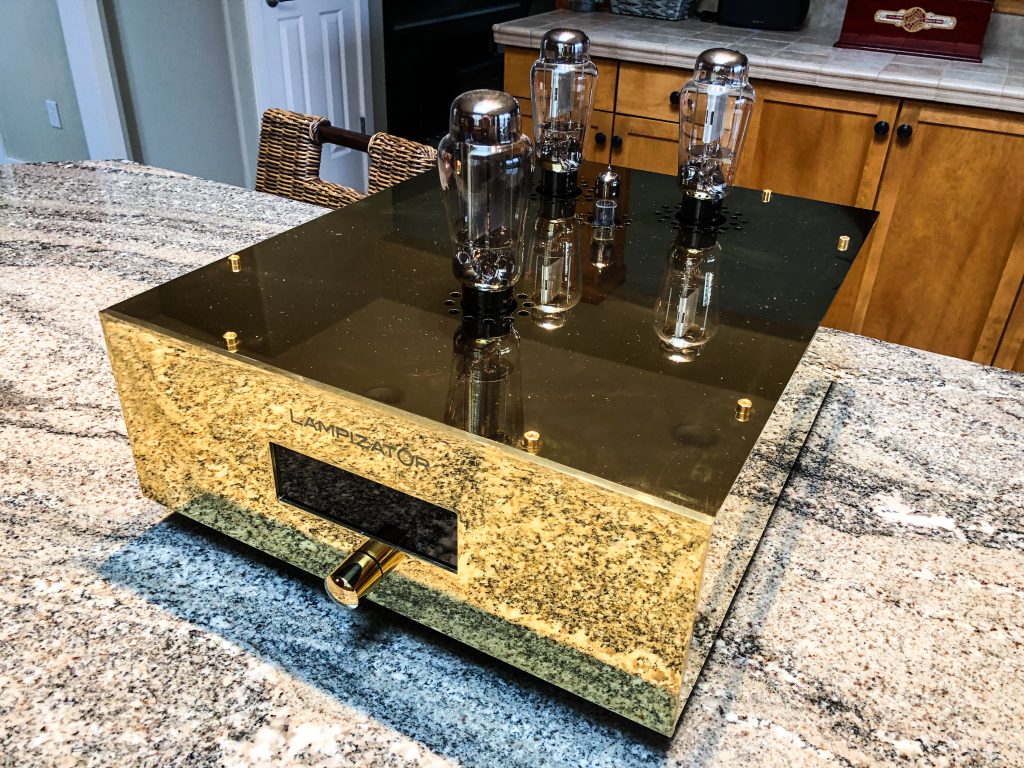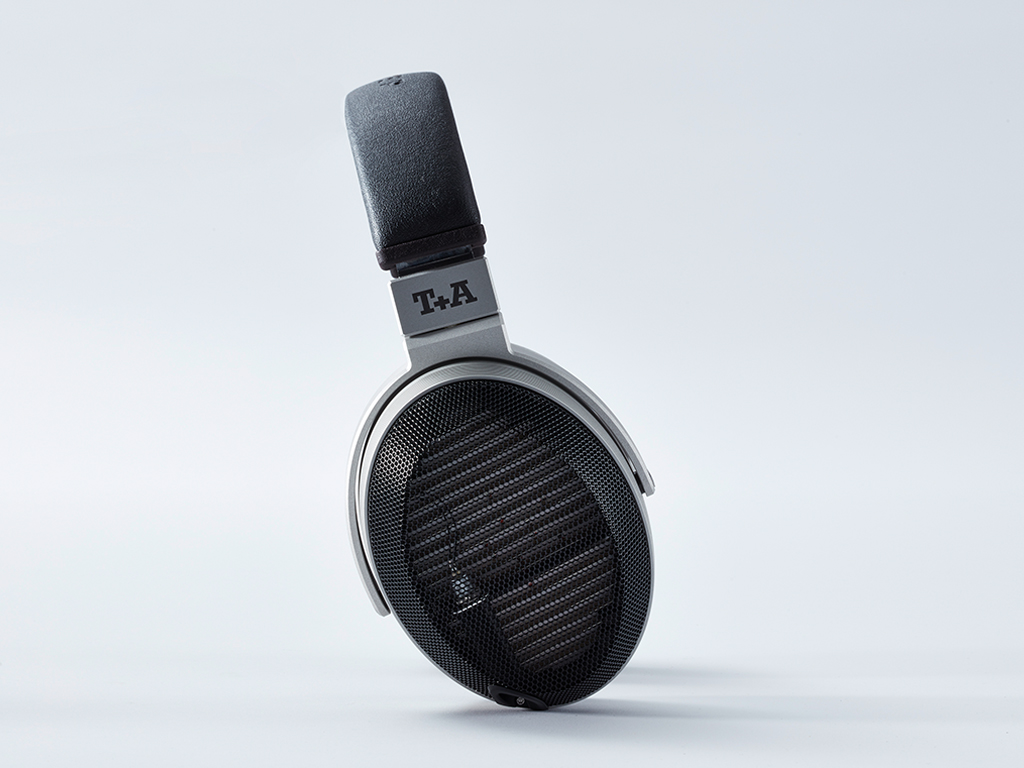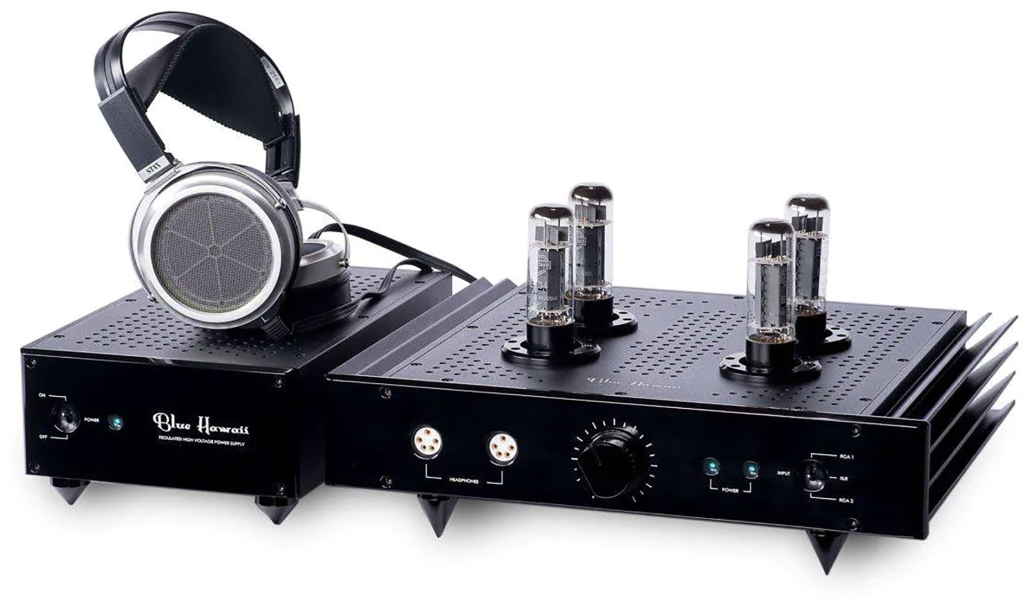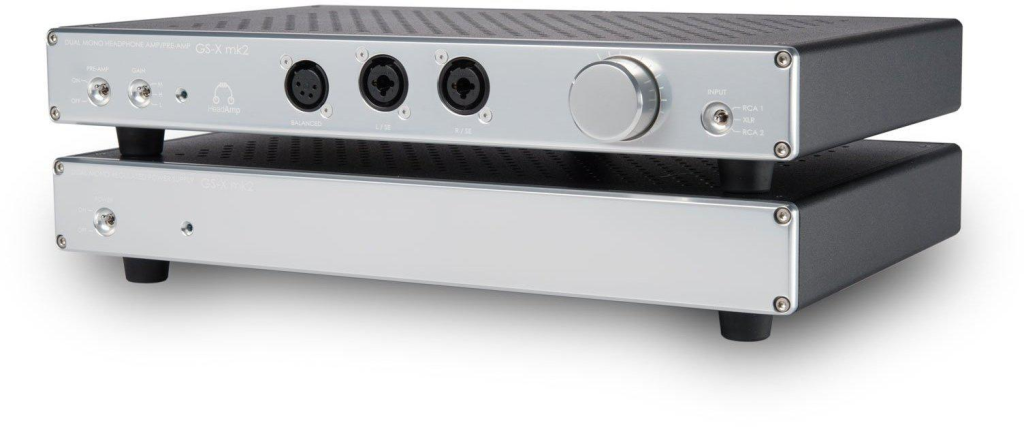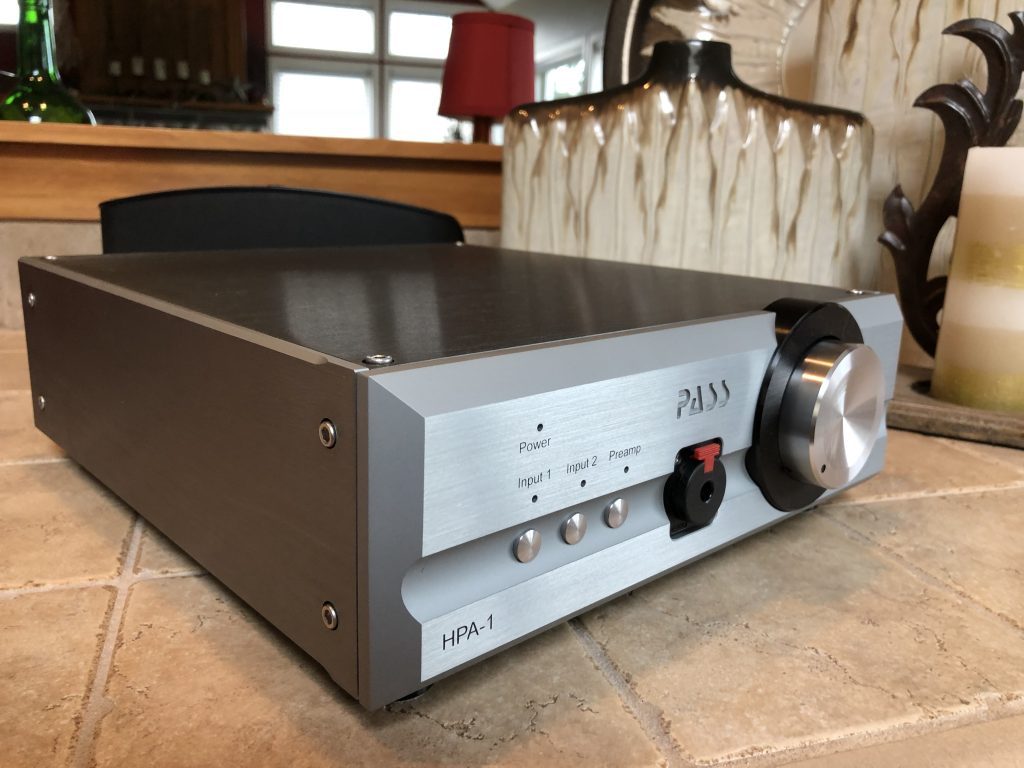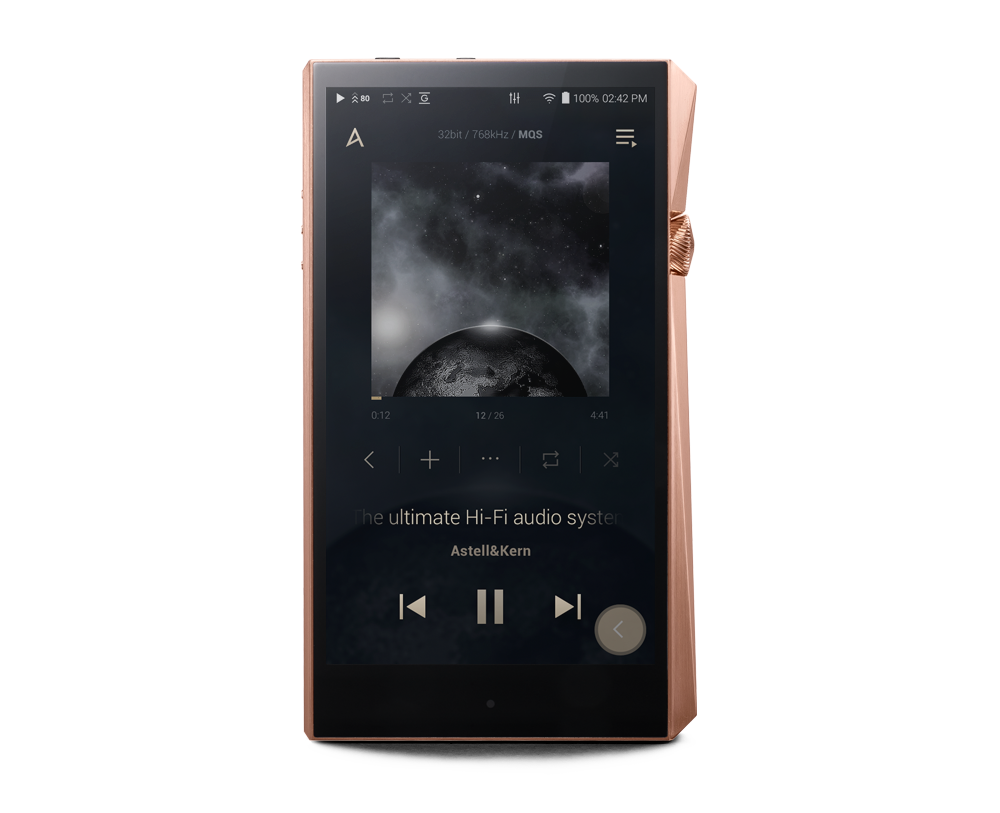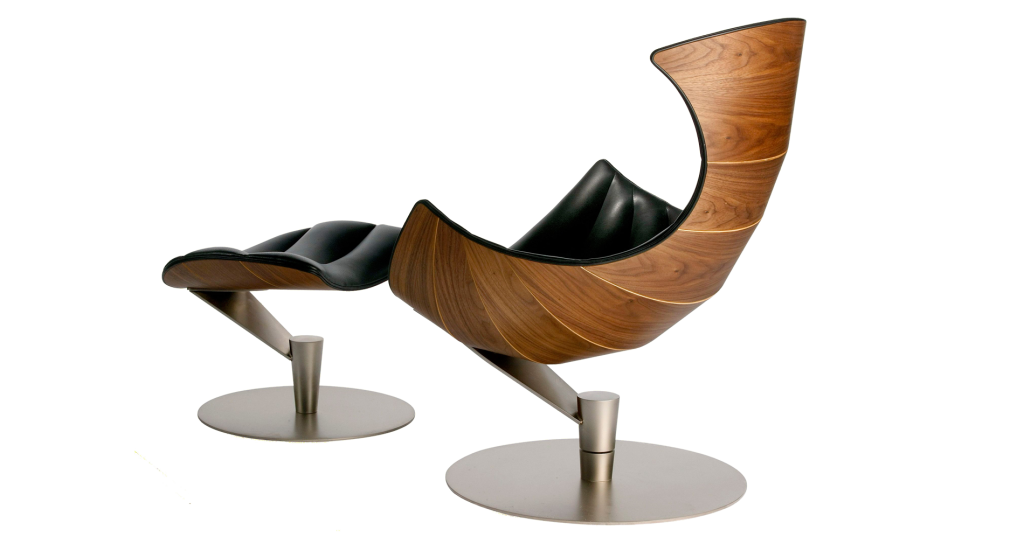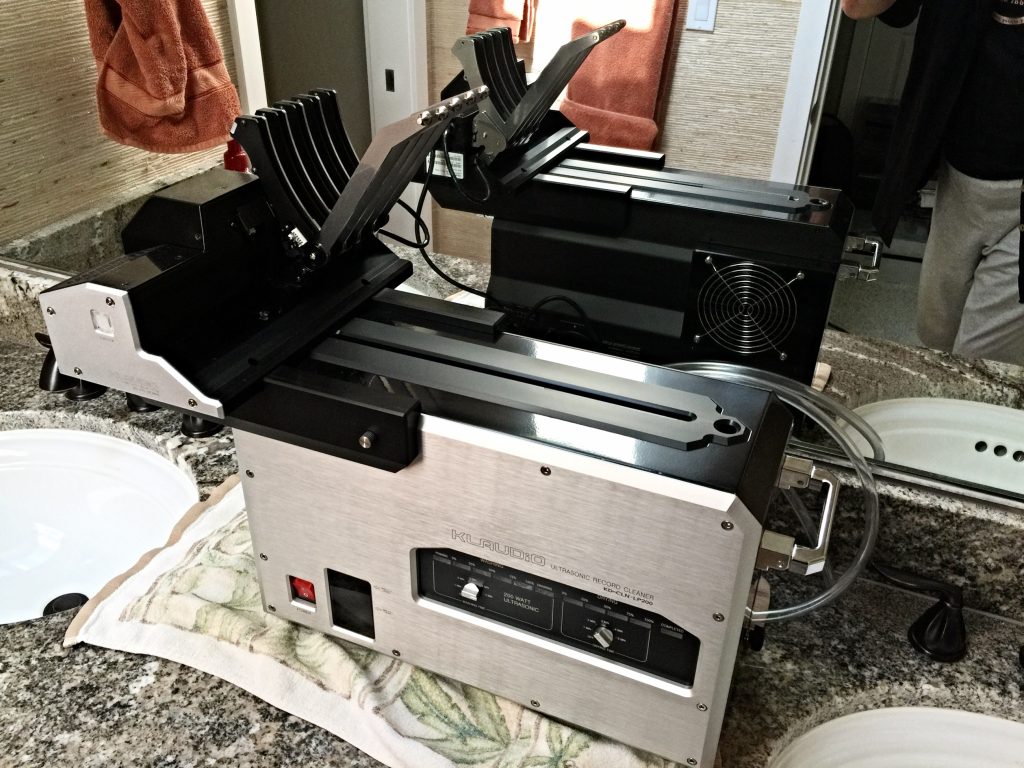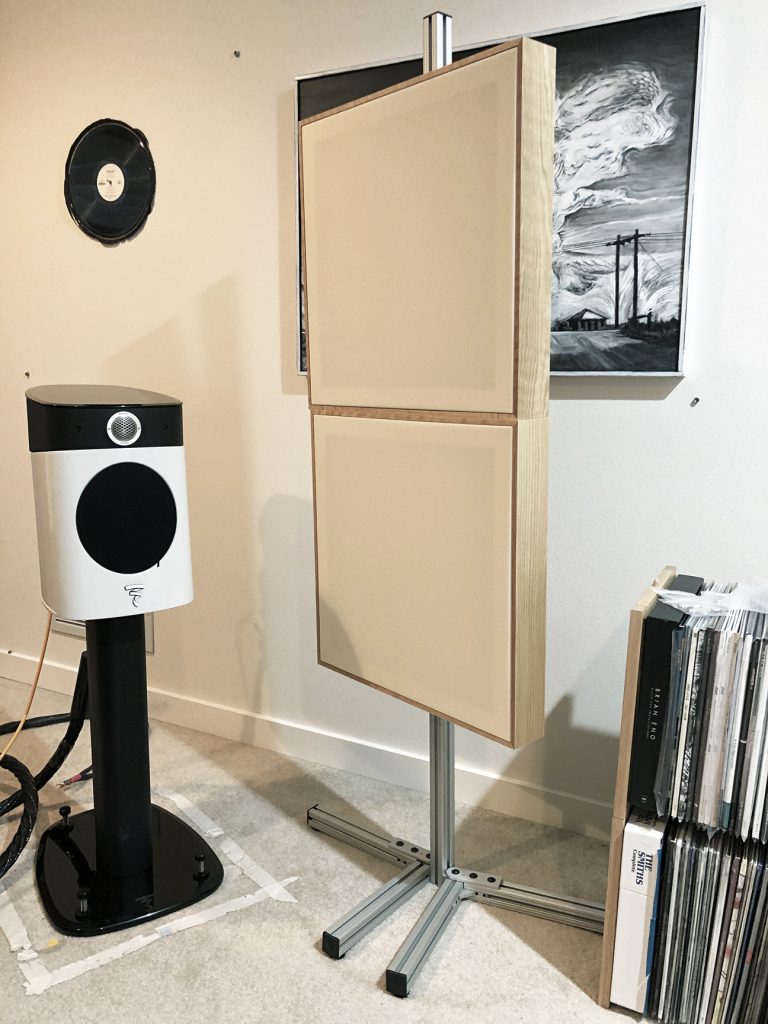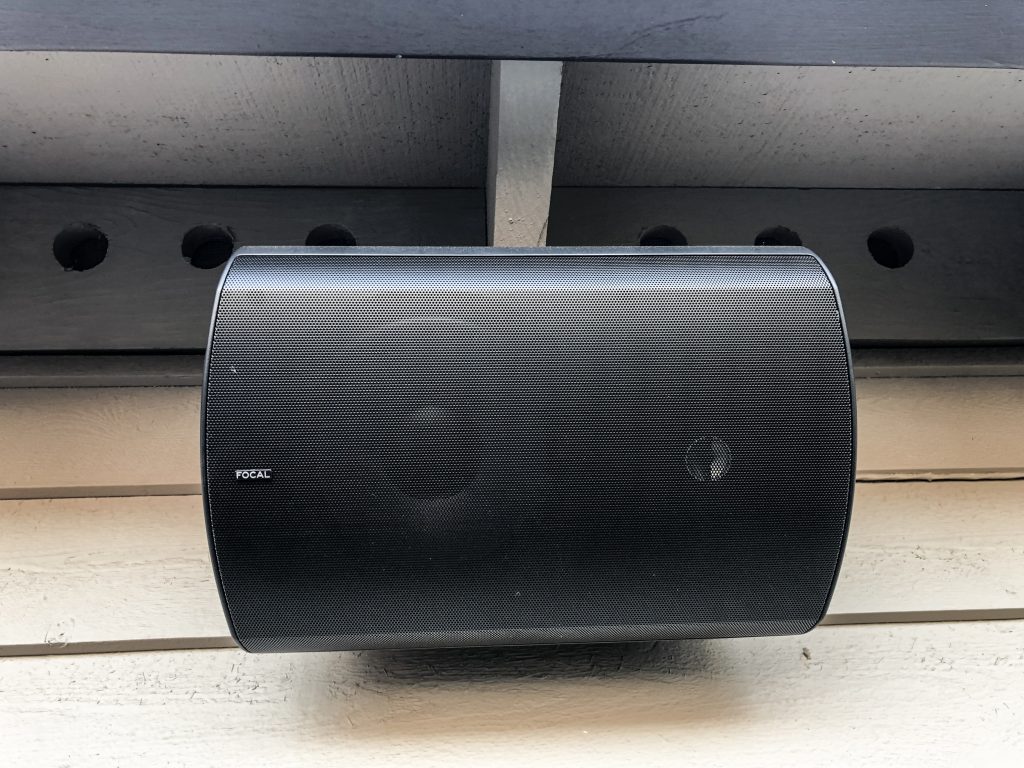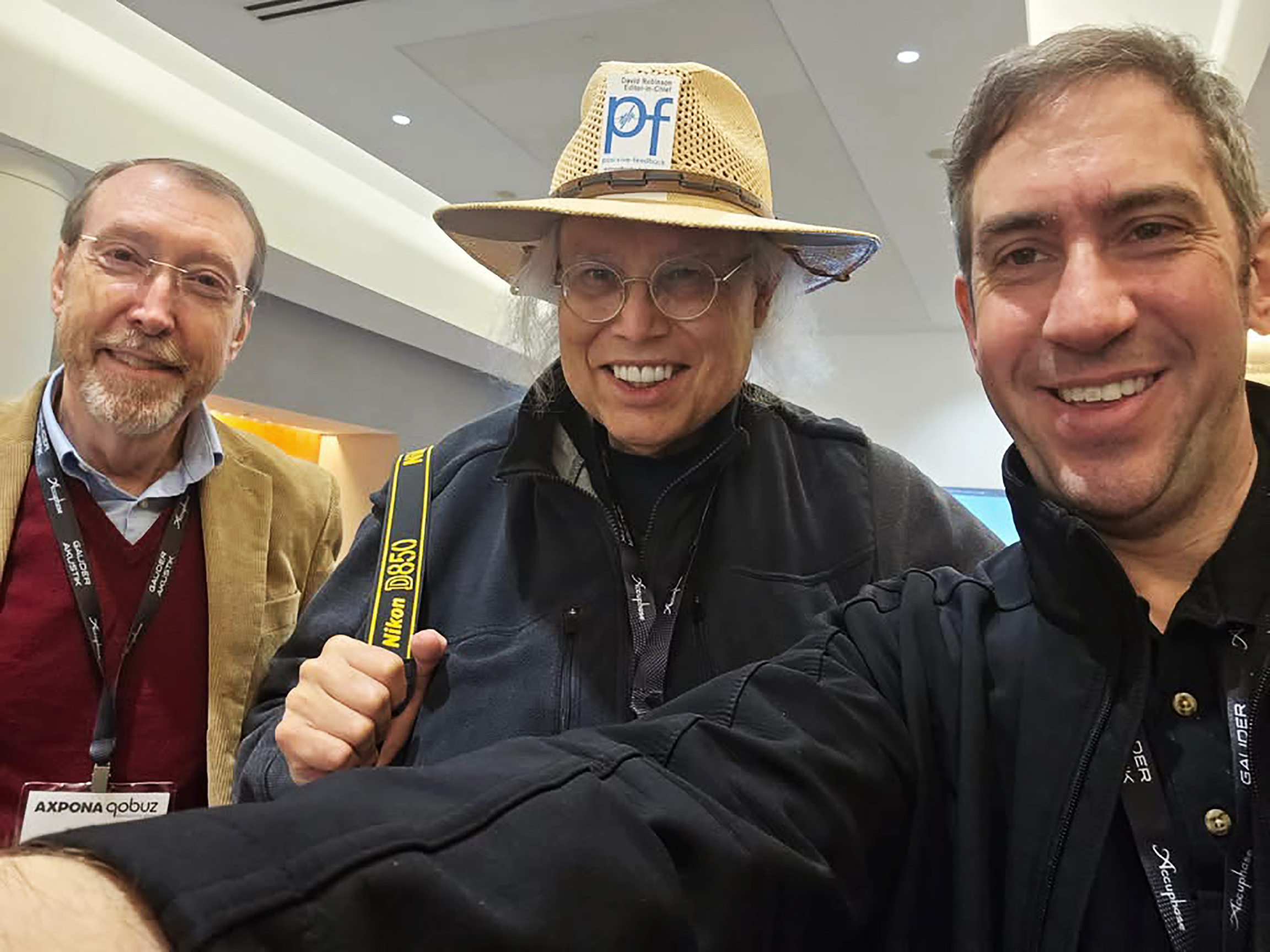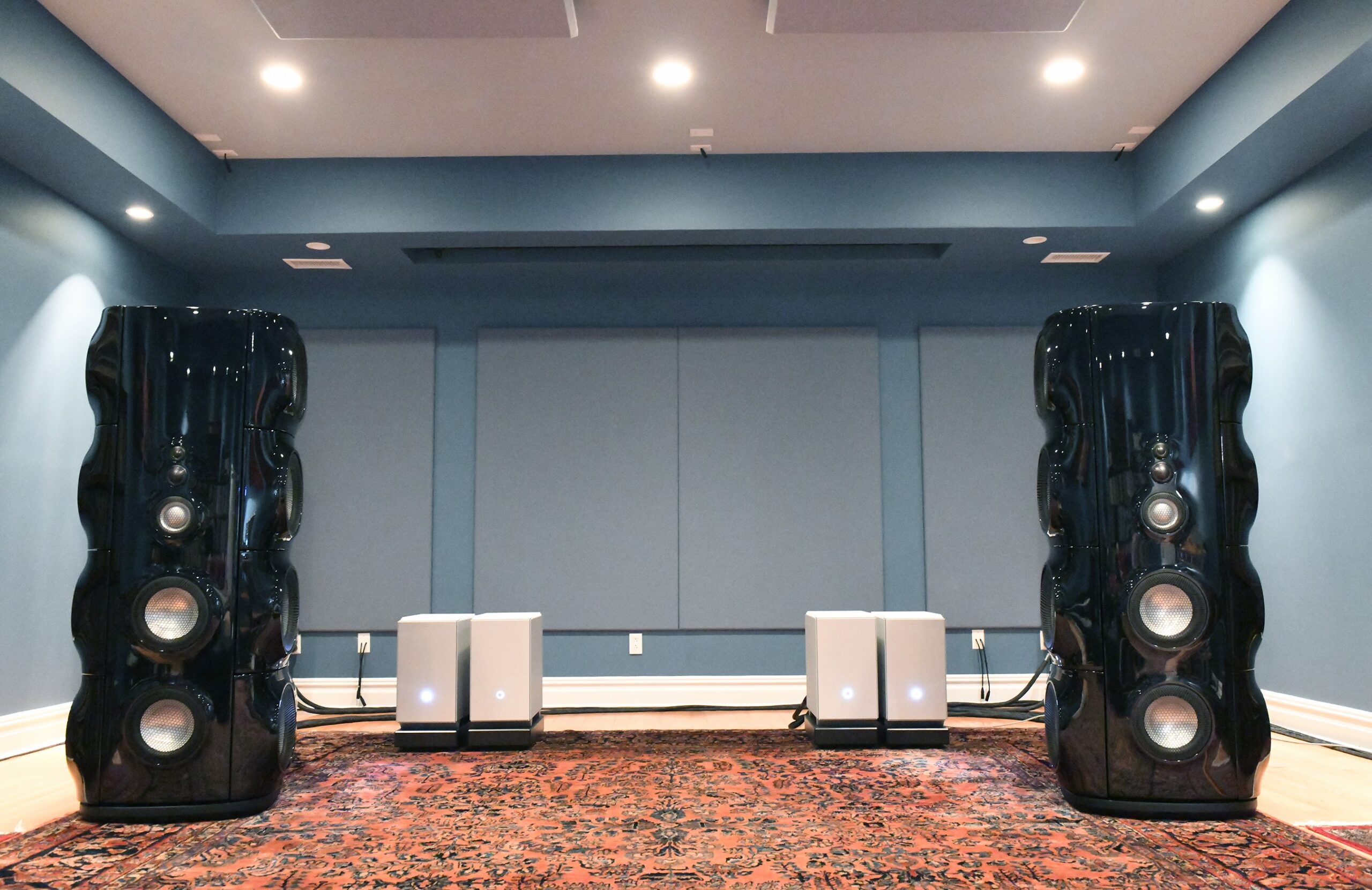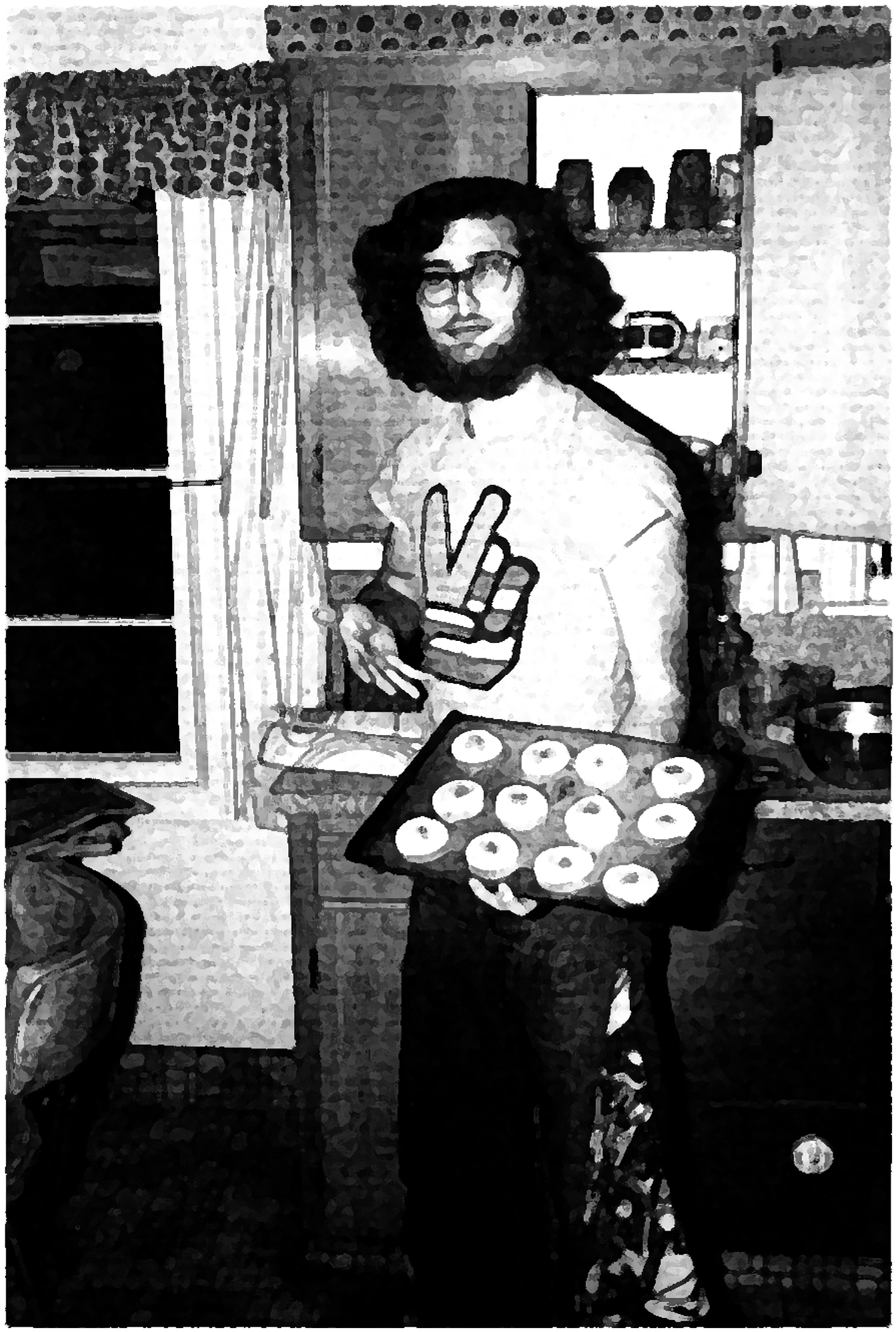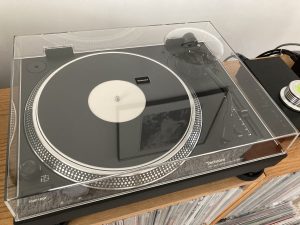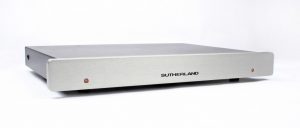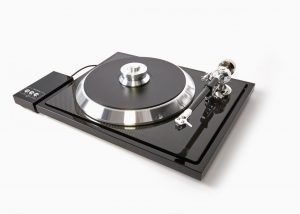Ye Olde Editor, 2022: a portrait in Ink Outline (photograph by John Robinson; image processing by Ye Olde himself).
A Study in Synergy
There's that word again.
As defined online by Oxford Languages, synergy is "the interaction or cooperation of two or more organizations, substances, or other agents to produce a combined effect greater than the sum of their separate effects." In other words, synergy represents combinations that produce an outcome that is more than one might expect from the mere summing of their parts. Logarithmic, not arithmetic results. In things audio, it's what happens when you find that rare and happy chain of components that gob smacks you with musical goodness that you never suspected it could produce.
From the beginning of my days in high-end audio back in the later 80s, system synergy was a Jeffersonian self-evident truth to my way of thinking. I would have thought that the foundational significance of synergy in a high-end audio system would have been generally accepted.
In which our hero meditates. (Ink drawing done by yours truly in desperate boredom during a faculty meeting, sometime in the late 80s.)
Turns out that I was somewhat naïve to think so.
To that point: I remember a rather strange phone conversation that I had with Harry Pearson when he gave me a call back in the '90s somewhere. For one reason or another, and among other things (all unhappy, the poor fellow), he took serious issue with my comments on the fundamental significance of synergy. To the best of my memory, the exchange went something like this:
Pearson: "And another thing! What's all this nonsense that I hear from you about synergy?
Me: "What do you mean?"
Pearson: "You're always talking about it!"
Me: "Well, of course. I consider it to be foundational in high-end audio. You don't think that it's important?"
Pearson: "No, I don't. Look, if you have a real reference system, you should be able to take a device under test, insert it into the system, and describe the differences of that particular component."
Me: "Harry, what I'm saying is that if you insert a new component into a 'reference system,' everything will change. A new device in an audio system will make the entire system different."
Pearson: "Bullshit!"
hp signature on a crate that he shipped to me back in the day... (Photograph and image processing by David W. Robinson)
And so it went…yet another pleasant conversation with hp. His confident assertions about "reference systems" and DUT didn't change my view of the subject. Synergy remains a central truth about high-end audio systems…and systems in general, I might add…and my writing/reviews continue to reflect this view.
Harry Pearson: a moment. Boulder, CO, 2009 (Photograph and image processing by David W. Robinson)
A Study in Synergy, Part the First: Introducing the Cast
The components of the playback chain that I'm meditating upon came together over a period of months, serendipitously, and were not originally thought of as a necessary combination. In fact, this combination of devices is off the beaten path, which is what makes the results so very interesting. Four different companies contributed key components, which...as it turned out in the course of human events...dovetailed into a wonderful listening experience.
The players?
Starting at the far end upstream in the audio signal channel:
Phasemation PP-2000 MC Cartridge
The Phasemation PP-2000 in action for this project (photograph and image processing by David W. Robinson)
Phasemation. Say who?
Until the arrival of the much-ballyhooed Relax MC, which is currently Phasemation's ultimate cartridge, the PP-2000 (MSRP of $6999.99) was the king of the roost. My audiobud Randy Forman, a US dealer for Phasemation, was instrumental in obtaining a review sample of the PP-2000 for me.
I was not familiar with Phasemation, but Randy, whom I've known for a number of years, assured me that I would really like the PP-2000 MC. Given that recommendation, I was willing to give the cartridge a go in this project.
Specifications
- Power Generation Method: Moving Coil Type
- Impedance: 4 Ohm
- Applicable Stylus Force: 1.7 to 2.0g
- Output Voltage: 0.3mV (horizontal direction of 1kHz 50mm/s)
- Compliance: 8.0X10 (e-6)cm/dyne (low compliance)
- Playing Frequency Range: 10Hz to 30kHz
- Separation: 30dB or more (1kHz)
- Channel Balance: Within 1dB (1kHz)
- Range of Recommended Temperature: 20℃ to 26℃
- Tare: 14.3g
- Stylus Chip: Diamond (line contact/curvature 0.03×0.003mm)
- Cantilever: Pure Boron φ0.26
- Magnet: Samarium Cobalt Magnet
- Magnetic Circuit Composition Material: Permendur
- Base: Stainless (Diamond-Like Carbon processing)
- Body Duralumin: (Diamond-Like Carbon processing)
In summary, the PP-2000 is a low-compliance MC, with a rather low output of 0.3mV. A connected phono amp will have to be able to handle this without generating excess/audible noise. Not the end of the world, but I have heard phono amps/stages that would find the PP-2000 to be a bit of a challenge.
I'm very pleased to say that this was not the case with the Gold Note PH-1000/PSU-1250 combination, however. It handled the output of the PP-2000 with aplomb.
Schröder CB-11 Tonearm
Of course, you can't suspend a cartridge upon nothing. A tonearm of some sort is required, one that mates well with the underlying turntable and mounting plate on one hand, and the cartridge on the other. (For Galen Carol Audio's very helpful guide to effective mass and compliance, see HERE.)
The Schröder CB-11 12" Tonearm, in Carbon Fiber (photograph and image processing by David W. Robinson)
As it turned out, Mark Dohmann of Dohmann Audio (see next section) had settled upon a tonearm design by Frank Schröder, his 12" CB-11.
Anyone who has spent much time with audiophile-grade turntable systems has at least heard the name Schröder, if not his tonearms themselves. I've had a prior direct experience with Schröder, with his Linear Tracking Tonearm on Steve Dobbins' very fine Beat MagDrive™ Turntable, back in 2018. (Big Red! That was quite a turntable system.) In this case, we weren't dealing with Frank's linear-tracking design, but with a unique hybrid implementation of ultra-precision bearing plus magnetics to control vibration to a vanishing point. As noted on the Dohmann Audio page about the CB-11:
"Unlike the unique magnetic bearing principle for which Schröder holds worldwide patents, the CB (Captive Bearing) series of arms feature hybrid ceramic bearings of unprecedented low friction (2mg vertical, 3.5mg horizontal). This is the lowest measured friction of any traditional bearing arm. With internal magnetic damping in the horizontal plane, the CB Tonearm has a calibrated center post to allow repeatable adjustment of VTA, adjustable azimuth and different headshell plates to allow adjustment of effective mass to couple with a wide range of cartridges.
One of the major influences in the sound reproduction of vinyl play back is mechanical vibration. After all, tonearms are basically mechanical devices. The CB tonearm is designed with defined physical zones within its infrastructure that focus vibrations away from key areas. It rejects vibrations conducted through the mounting plate that originate from other turntable components such as the motor, plinth, bearing, and airborne vibrations by diverting them away from the critical path.
The premise is to integrate a stiff, balanced mass structural coupling to the chassis. This effectively eliminates external excitation by generating equal forces to all sides of the arm, maintaining the dynamic stability of the system and preventing a deflection of the cantilever."
Mark Dohmann of Dohmann Audio specifically recommends the CB-11 for their Helix Two Mk2—which carries a lot of weight with me—and that's how it arrived for evaluation. The combination of Mark's strong recommendation and the Schröder name was enough for me. I asked for the Carbon Fiber version, which was supplied.
The specifications for the Schröder CB-11 follow.
Specifications
- Arm wand length: 12 inches
- Effective length (mm): 282.0
- Pivot to spindle distance (mm): 267.5
- Overhang (mm): 14.52
- Offset angle: 19.35°
- Shaft diameter (mm): 23
- Effective mass with supplied cartridge mounting plate (grams): 18
- Effective mass with optional heavy cartridge mounting plate (grams): 23
- Effective mass with optional ultra-light cartridge mounting plate (grams): 16.5
- Arm wand material: Carbon Fibre or Kingwood
- Mounting hole: 24-25mm with single M6 tapped hole
- Ceramic hybrid bearing friction: > 2mg vertically, > 3.5mg horizontally
- Distance between mounting surface and platter level: 25-60mm, best ~30-35mm
- Balance characteristics: Neutral balance arm, no change in VTF when altering VTA or record thickness. Internal magnetic damping for the horizontal movement
- Adjustable Parameters: VTF, VTA, Overhang, Offset angle, andAzimuth
- Anti-skating: Frictionless, resonance free magnetic anti-skating up to 2.3 grams. VTF higher tracking forces can be compensated for by exchanging the anti-skating screw, upon request.
- Wiring: Cryogenically treated, low loss, high purity copper wiring. Single run from cartridge clips to RCAs. 1m length from arm to RCAs. (Additional lengths available upon request)
- Double Counterweight and Lower counterweight can be exchanged to an optional lighter or heavier cylinder, allowing for an increase/decrease of total counterweight mass without altering the overall mass distribution of the arm. Adjustment to a fundamental arm cartridge resonance frequency of 8-12Hz yields optimal performance of the system.
- Metal Colour: Black
Dohmann Audio Helix Two Turntable
The Dohmann Audio Helix Two Turntable/Schröder CB-11 Tonearm/Phasemation PP-2000/DS Audio ION-001 in action (photograph and image processing by David W. Robinson)
Mark Dohmann, the brilliant designer at Dohmann Audio, has been known to me for a number of years. He was a key driving force behind Continuum, a legendary turntable brand from years ago, now departed. His Caliburn turntable was generally considered one of the very best...if not the best...LP spinners of its generation. And its kid brother, the Criterion, was evaluated and extensively reviewed by me back in PF Issue 45, September/October of 2009. Mark's work is stellar, and is the foundation of the synergy that emerged with this playback chain.
So when an opportunity came up via good friend and audiobud Doug White, of The Voice That Is, to hear the Helix Two Mk2 turntable from Mark's new company, Dohmann Audio, I simply could not pass it up.
Specifications (Lightly annotating the content from Dohmann Audio's Web site:)
- Top Plate: All Helix Two Mk2 turntables come with a black anodized aluminum top plate as standard. A carbon fiber top plate is available as an upgrade which complements the new optional Advanced Composite Armboard.
- Note: The Helix Two Mk2 that I evaluated here has the carbon fiber top plate and Advanced Composite Armboard.
- Helix Two Mk2 turntables are available with the following metallic finishes: Black, Silver, and Titanium. Note: For this project, I ordered the silver finish version of the Helix Two Mk2.
- Armboards: All Helix Two Mk2 turntables come with a black anodized aluminium armboard as standard. The armboard is removable to facilitate simple interchange and calibration. The Advanced Composite Armboard is available as an upgrade (which is how the Helix Two arrived here). The result of years of research and experimentation, it incorporates a material which mitigates resonance to a very high level, resulting in an even greater lowering of the sonic noise floor and enabling an even greater articulation of musical detail.
- Tonearm Mounting: The Helix Two Mk2 turntable is capable of mounting one tonearm up to 12" (305mm). If you need to mount two tonearms, you'll shift to the Helix One model.
- Simple Operation: The Helix Two Mk2 is operated by two push buttons on the table surface for speed selection/on/off. It's an extremely clean control interface…one can hardly get lost!
- Speed Control: Speed is constantly calibrated over 130,000 times per second to deliver precise 33.33 or 45.15 rpm (factory default).
- Default factory set speeds are: 33 RPM and 45 RPM. 78 and other RPMs are available by request
- Simple user-adjustable speed control is accessible via two intuitive push buttons on rear of chassis.
- Drive System: Fully integrated Swiss-manufactured high torque motor
- Dual belt platter drive designed to reduce static electricity and vibrations.
- Power Supply: The Helix Mk2 turntable has an outboard power supply.
- Power Options: 110-120 VAC, 50/60Hz 2A and 220/240 VAC, 50/60 Hz 1A
- Legacy: The Helix Two was launched at the Munich High End show in May 2017 and has been manufactured till August 2019. The Helix Two Mk2, as reviewed here, is the current version and has been manufactured from September 2019 onwards. It incorporates a new Swiss-manufactured motor made to Dohmann Audio's specifications, new power supply, new electronics, new speed adjust functionality and some upgraded resonance mitigation technology.
- Dimensions and Weight: Width 480mm x Depth 400mm x Height 200mm. Width 18.9 inches x Depth 15.8 inches x Height 7.9 inches. Combined shipping weight is 70Kg (155 pounds) in a custom road case.. Recommended installation requires a surface capable of supporting up to 60Kg (133 pounds).
Gold Note PH-1000 Phono Stage and PSU-1250 External Power Supply
The powerful and beautifully seductive Gold Note PH-1000 in its gold finish (image courtesy of Gold Note)
As I've been noting at Positive Feedback for the past few months, I have become extremely impressed with the Gold Note product line. This is not a sudden flash in the pan; Gold Note has received a lot of attention from several of us at PF over the past few years, as you'll see HERE.
As it turned out, while I was in discussion with Mark Dohmann about the Helix Two Mk2 turntable, Gold Note asked if I would be interested in evaluating their reference Phono Stage, the PH-1000. At first, they would send the PH-1000 without the upgrade of the PSU-1250 External Power Supply, and then ship the PSU-1250 later. Was I interested?
Definitely!
The gold finish that you see above is the finish that I chose for the review sample.
Once the PH-1000 arrived, I was very taken with its technical capabilities, all housed in an extraordinarily beautiful chassis. It's certainly loaded with features and important enhancements, which I'll be reflecting upon in Part the Second.
General specifications
- EQs available: 40+ EQ CURVES. RIAA, Capitol, Columbia/CBS, Deutsche Grammophon, Decca London USA, Decca London UK, and Decca Mono 78rpm, Epic, HMW, Mercury, RCA Victor, Philips, Elektra, L'Oliseau-Lyre, Parlophone, and more. Each curve can be "enhanced" with our proprietary technology inspired by the Neumann Cutting Lathe for superior dynamic and musicality.
- Note: This is damned impressive. For serious record collectors, audio reviewers, and even record lovers who are more modest in their needs/expectations, the provision of so many possibilities for fine-tuning record playback is really phenomenal. A true Swiss Army Knife for the LP lover!
- Frequency Response: 20Hz – 20kHz
- EQ Curves: 40+ EQ curves. 4 custom EQ curves all with Enhanced option @ +/- 0.3dB max.
- THD (Total Harmonic Distortion): <0.01% max.
- Signal to Noise Ratio: 100dB
- Dynamic Range: 110dB
- Infrasonic Filter: 10Hz/36dB octave (ON/ OFF)
- Mono/Stereo: Stereo, Stereo 180°, Mono, Mono 180°, Mono L
- Channel Swapping: R/L, L/R
- IR Receiver: For multifunctional remote control
- Inputs: 2x unbalanced RCA (0.1mV MC up to 8.0mV MM). 1x balanced XLR (0.1mV up to 1.0mV MC)
- Load: 12 options for RCA (100kΩ, 75kΩ, 47kΩ, 33kΩ, 22kΩ, 1kΩ, 470Ω, 220Ω, 100Ω, 47Ω, 22Ω, 10Ω + external load). 8 options for XLR (4k7Ω, 1kΩ, 470Ω, 220Ω, 100Ω, 47Ω, 22Ω, 10Ω + external load])
- Capacitance: OFF, 100pF, 150pF, 220pF, 330pF, 470pF, 1000pF
- Gain: 40dB MM to 65dB MC with 7 options [0dB, ± 3dB, ± 6dB, ± 9dB]
- Line Input Levels: 2Vrms (standard) up to 2,5Vrms (max)
- Audio Outputs: 1x unbalanced RCA @1V. 1x balanced XLR @4V
- 1x Output Stereo for Tube (balanced GN) for optional TUBE-1012 & TUBE-1006
- Output Impedance: Unbalanced 100Ω and Balanced 300Ω
- Output Level: 2Vrms standard up to 2.5Vrms max
- Power Consumption: 30W
- PSU Input: For external power supply Gold Note PSU-1250 (which is the power supply tested with the PH-1000 that we have here) & PSU-1000
- Power Supply: Dual-Mono linear power supply. 100-240V with auto sense, 50-60Hz
- Fuse: 2A F
- Dimensions: 430mm W x 135mm H x 375mm D. 630mm W x 350mm H x 600mm D – boxed
- Weight: Kg. 12 – net. Kg. 17 – boxed
PSU-1250 Technical Features
- PSU-1250: 7 low-noise voltage regulators
- PSU-1000: 5 low-noise voltage regulators
- Maximum Variation of Output Volatge: 0,05 %
- Line Noise Rejection: >80dB
- Common Noise Rejection: >80dB
- Absolute Phase Control: Selectable from front panel
- Full Power Response Time: <2,5µsec
- Power Consumption: 100W
- Dynamic Power: PSU-1250: >300W. PSU-1000: >200W
- Stand By Power: 1W
- Power Supply: 100-120V / 220-240V with auto sense, 50/60Hz
- Dimensions: 425mm W x 135mm H x 360mm D
- Weight: PSU-1250: Kg. 21 net – Kg. 27 boxed. PSU-1000: Kg. 20 net – Kg. 25 boxed
- PSU Connection Cable: 1m
Thus, the audio ensemble in specifications.
Now that the players in the chain have been introduced, we'll proceed to the notes about the audio performance in Part the Second, appearing soon. There's more to come....
Photographs as credited above. Drawings by Dan Zimmerman and David W. Robinson.





